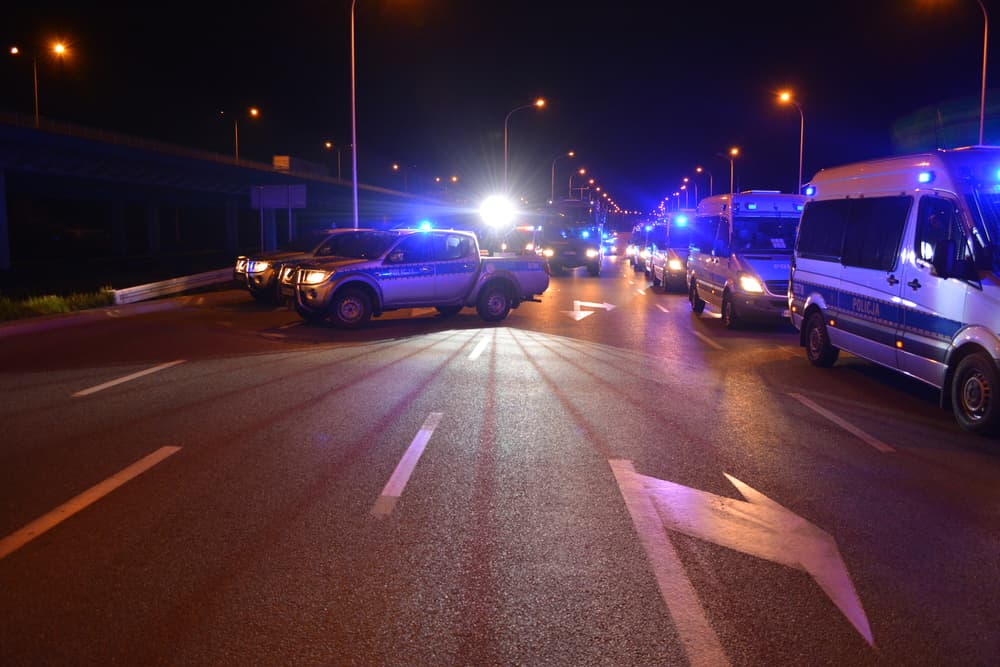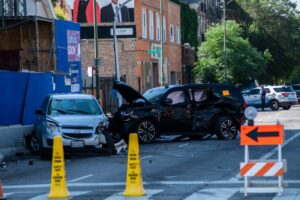Where Do San Antonio Car Accidents Most Occur?

Where do car accidents most occur in San Antonio? For drivers, understanding where accidents commonly occur is more than a matter of local knowledge. It’s a crucial element in promoting safer driving practices. Contact an experienced San Antonio car accident lawyer for legal representation. This blog provides a matter-of-fact exploration of the city’s traffic challenges and key locations where accidents frequently happen, offering insights to enhance driver awareness and contribute to overall road safety.
Let’s take a look at some of the leading danger zones for San Antonio car accidents.
Interstate Highways
A trio of major interstate highways anchor San Antonio’s robust transportation network: I-10, I-35, and I-37. These arteries crisscross the city, facilitating the flow of both local and interstate traffic.
While essential for connectivity, these thoroughfares also present challenges that contribute to the occurrence of car accidents.
Factors Contributing to Accidents on Interstate Highways
- High Volume of Traffic: The perpetual flow of vehicles on San Antonio’s interstate highways can lead to congestion, creating conditions ripe for accidents.
- Complex Interchanges: Interchanges and junctions along these highways demand quick decision-making, and misunderstandings or misjudgments can result in collisions.
- Varied Speeds: With vehicles ranging from slow-moving trucks to high-speed commuters, the diversity in speeds amplifies the risk of accidents.
Navigating San Antonio’s interstate highways demands a proactive approach to safety. By understanding the factors that contribute to accidents and adopting prudent driving practices, motorists can contribute to a safer driving environment.
Downtown Congestion
San Antonio’s downtown is a bustling hub, attracting a diverse mix of commuters, tourists, and local traffic. The convergence of these elements creates a dynamic and often congested environment, where the potential for car accidents notably increases.
Factors Leading to Accidents in Downtown Areas
- High Traffic Volume: The downtown core witnesses a continuous influx of vehicles, contributing to congestion and making tight spaces even more challenging to navigate.
- Frequent Stops and Starts: Stop-and-go traffic is commonplace in downtown areas, increasing the likelihood of rear-end collisions and fender-benders.
- Pedestrian Presence: With tourists exploring iconic sites and locals navigating the city on foot, the mix of pedestrians and vehicles can lead to accidents if drivers are not vigilant.
- Complex Intersection Layouts: Downtown intersections often feature complex layouts, presenting a challenge for drivers unfamiliar with the area and increasing the risk of collisions.
By acknowledging the unique challenges of downtown driving and adopting strategic measures, motorists can contribute to a safer environment in San Antonio’s vibrant city center. Taking these precautions not only enhances personal safety but also promotes the overall well-being of everyone in the downtown.
Intersection Trouble Zones
Austin’s roadways, while essential for city mobility, often harbor intersection trouble zones—specific traffic crash hotspots. Understanding the dynamics of these areas can significantly contribute to safer driving.
Identification of Specific Intersections Prone to Accidents
- Lamar Boulevard and 45th Street: This intersection is notorious for its high traffic volume and complex layout, leading to a heightened risk of collisions.
- South Congress Avenue and Riverside Drive: The convergence of major thoroughfares at this junction poses challenges, especially during peak traffic hours.
- Research Boulevard and Burnet Road: With multiple lanes and constant lane changes, this intersection demands extra caution to avoid accidents.
Common Challenges at Intersections
- Heavy Traffic Flow: High traffic density contributes to congestion, increasing the likelihood of accidents at intersections.
- Inadequate Signage: Some trouble zones suffer from unclear or insufficient signage, leading to confusion among drivers.
- Complex Lane Configurations: Intersections with intricate lane patterns demand precise navigation, creating conflict points for drivers.
By recognizing these trouble zones, understanding the challenges, and adopting defensive driving strategies, motorists in Austin can reduce the frequency of traffic crashes at intersections. Vigilance and adherence to safe driving practices promote a safer driving environment for everyone.
Residential Areas

While residential areas are perceived as havens of tranquility, they pose surprising risks for drivers. The mix of residential traffic, pedestrians, and parked vehicles can create an environment where accidents may occur.
Causes of Accidents in Residential Areas
- Speeding: Some drivers may underestimate the need for reduced speeds in residential zones, contributing to accidents due to limited reaction time.
- Distracted Driving: Distractions like phone use or adjusting in-car systems can divert attention, leading to collisions, particularly in the close quarters of residential streets.
- Limited Visibility: Parked cars, trees, and other obstructions can obstruct sightlines, making it challenging to anticipate the movements of other vehicles or pedestrians.
Drivers should adhere to posted speed limits, which are set lower in residential areas to enhance safety for both drivers and residents. Residential areas often have children playing or pedestrians walking. Stay vigilant and prepare for sudden movements.
Follow right-of-way rules and yield to other vehicles or pedestrians, especially at intersections or crosswalks.
When driving in a residential area, also watch for car doors opening and exiting passengers. Leave enough space to safely pass parked vehicles.
Construction Zones
San Antonio’s evolving landscape often features ongoing road construction projects aimed at enhancing infrastructure. These developments mark the city’s progress but also introduce challenges for drivers navigating construction zones.
Increased Accident Risks in Construction Zones
- Reduced Lane Space: Construction activities often lead to lane closures and reduced road space, increasing the likelihood of congestion and accidents.
- Altered Traffic Patterns: Sudden changes in traffic patterns, such as detours or lane shifts, can catch drivers off guard, contributing to collisions.
- Uneven Surfaces: Road surfaces in construction zones may be uneven or incomplete, posing risks for loss of vehicle control and accidents.
- Presence of Construction Vehicles: Heavy machinery and construction vehicles moving in and out of the area create additional hazards for drivers.
A cautious and alert approach is paramount for preventing accidents in construction zones.
How Can a Lawyer Help You After an Austin Car Accident?
An experienced Austin car accident lawyer considers various factors when putting together a personal injury or wrongful death case for a car accident claim. These factors help build a strong case to seek compensation for the injured party or their family.
Some key elements include:
- Evidence of Liability: Lawyers analyze police reports, eyewitness statements, traffic camera footage, and other evidence to determine liability.
- Extent of Injuries: Medical records, expert opinions, and testimony from healthcare professionals demonstrate the impact of the accident on the victim’s health and well-being.
- Causation: Lawyers work to establish a clear link between the negligent actions of the at-fault party and the harm suffered by the victim.
- Damages Incurred: This includes medical expenses, lost wages, property damage, pain and suffering, and other related costs.
- Insurance Coverage: Lawyers investigate policy limits and explore all potential sources of compensation.
- Witness Testimonies: Statements from eyewitnesses can provide valuable perspectives on the events leading to the accident. Lawyers gather and use witness testimonies to corroborate the victim’s version of the incident.
- Accident Reconstruction: In complex cases, accident reconstruction experts may recreate the scene, establishing the sequence of events and determining the mechanics of the collision.
- Driver Negligence: This may involve showing violations of traffic laws, drunk driving, or other forms of negligence.
- Communication with Insurance Companies: Experienced lawyers handle communication with insurance companies to negotiate fair settlements and ensure that insurance companies do not take advantage of their clients.
Lawyers adhere to the statute of limitations, filing legal actions within the specified time limits. In Texas, the statute of limitations for personal injury cases generally gives you two years to file a lawsuit seeking compensation for your injuries.
Wrongful Death Considerations
In cases involving wrongful death, lawyers consider the emotional and financial impact on the surviving family members and seek compensation for loss of companionship, support, and other related damages.
By carefully considering these factors, an experienced Austin car accident lawyer builds a comprehensive case to secure the maximum compensation for their client. This thorough approach increases the chances of a successful personal injury or wrongful death claim.
Contact Lorenz & Lorenz Accident & Injury Lawyers PLLC

Ted R. Lorenz, San Antonio Car Accident Lawyer
If a car accident results in personal injury in Austin, don’t navigate the legal complexities alone. At Lorenz & Lorenz Accident & Injury Lawyers PLLC, our San Antonio personal injury attorenys experienced team can secure the compensation you deserve.
Contact Lorenz & Lorenz Accident & Injury Lawyers PLLC for your free consultation. We’ll assess the details of your case, explain your rights, and outline a strategy to pursue justice and fair compensation.
Time is of the essence, given Texas’s statute of limitations.
Your path to recovery begins with experienced and dedicated legal representation. Call our Austin law office at (512) 477-7333 or complete our online contact form.
